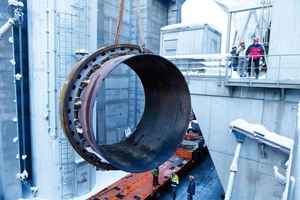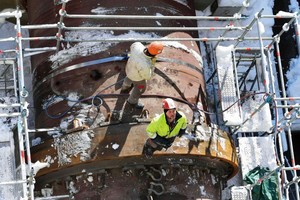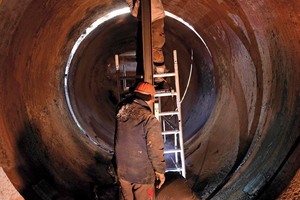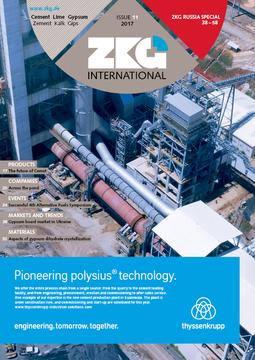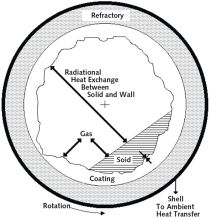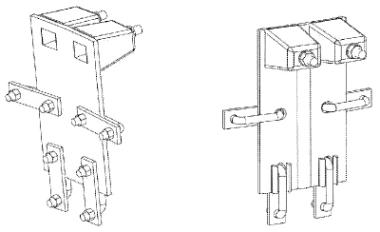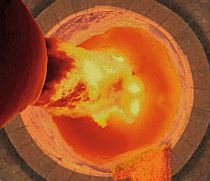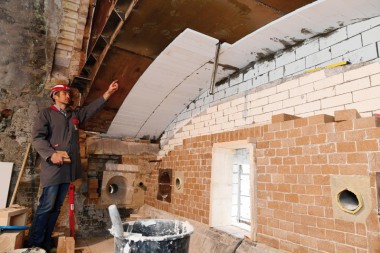New shell section for the rotary kiln
The heart of the Leube cement plant is its rotary kiln. For the 2016/2017 winter repair scheme, Leube invested some € 200 000 in a new shell section. “Our kiln’s rotating tube is 45 m long and therefore cannot be transported in one piece. Consequently, it arrives in individual parts called sections, which are then welded together on site”, explains Engineering Division Chief Günter Waldl.
The maintenance team was able to remove, overhaul and reinstall the most important component of all, the so-called tire bore from the plant’s old rotary kiln (out of service since 2010). This entailed extracting the 2.5 cm-thick steel section from the old kiln with a cutting torch and lifting it away with a heavy duty crane. The tire bore is 2 m long, has an inside diameter of 3.6 m and a wall thickness of 5 cm.
Components fitted together by crane
A crane was used to raise the overhauled parts and properly align them for dead-on fixation in the rotary kiln. “The kiln has to be axially positioned to millimeter accuracy”, explains Maintenance Chief Christian Wörgötter, “or its rotary motion afterwards will be wobbly”. Then, the tube was rewelded at the interfaces. “Such work has to be done by hand. We had to do the welding in several layers, each time inspecting the last pass for cracks in order to perform any necessary rectifications on the spot”, says Wörgötter. Each interface required welds with a length of about 11.3 m. All in all, the work took seven weeks to complete.
“That was challenging work”
“The lifting and fitting together of components that weigh 32 t each”, reports Wörgötter, “was especially difficult in the limited space around the rotary kiln. It was also very challenging for the people from Kremsmüller Industrieanlagenbau to get the spare parts properly aligned.
The old shell section stems from the cement plant’s first rotary kiln, which was initially installed in the 1960s. Delivery of the parts was a spectacular affair: They did not arrive by flatbed truck as usual, but were instead pulled by sled over snow-covered roads and highways from the Salzburg train station to St. Leonhard. At the time of its extraction in December 2016, the shell had accumulated some 350 000 operating hours. All that time, Leube had been monitoring its wear state, ultimately determining that it had reached the end of its service life. “We decided to replace it quickly in order to avoid component failure and a resultant prolonged period of kiln outage”, explains Waldl.


